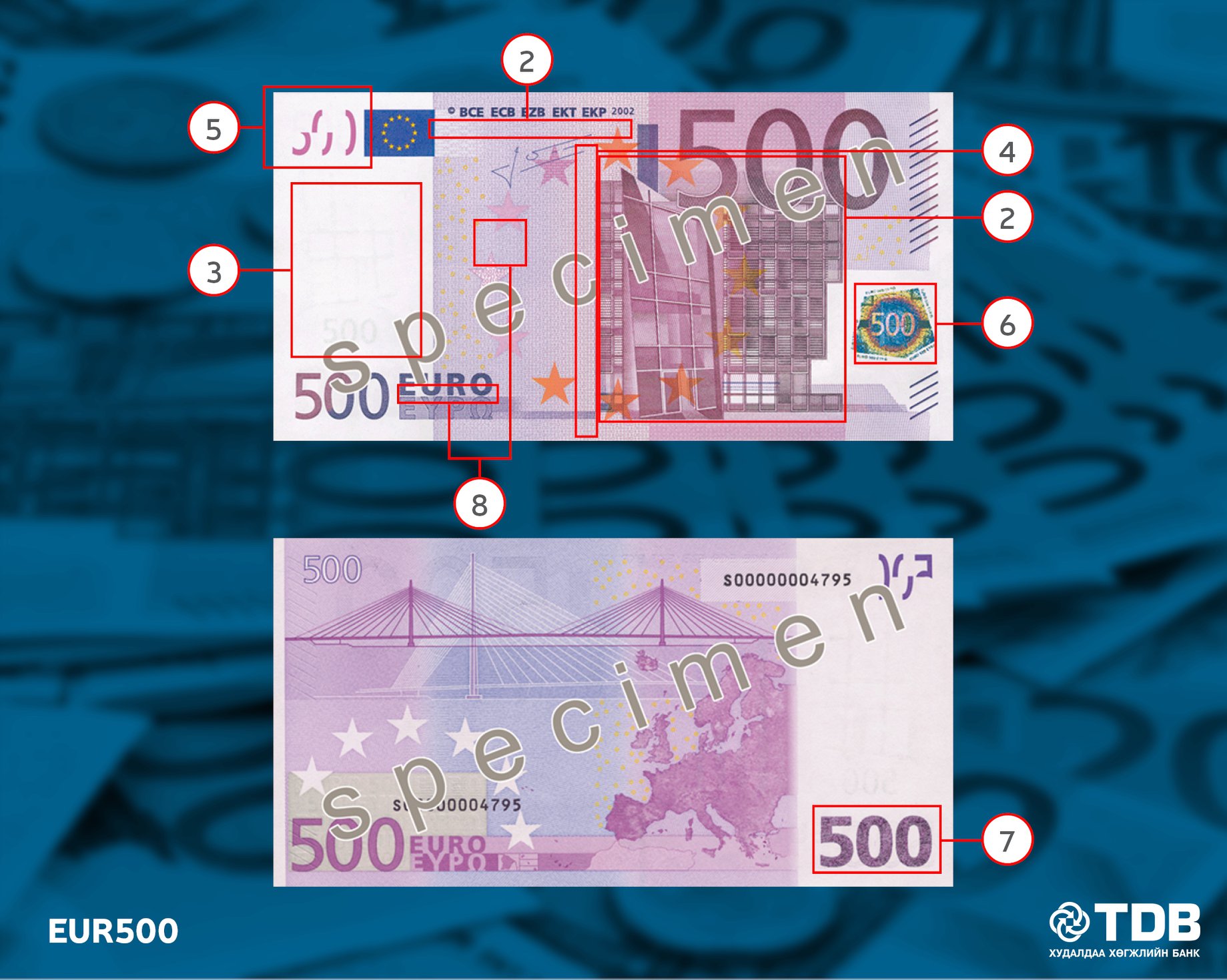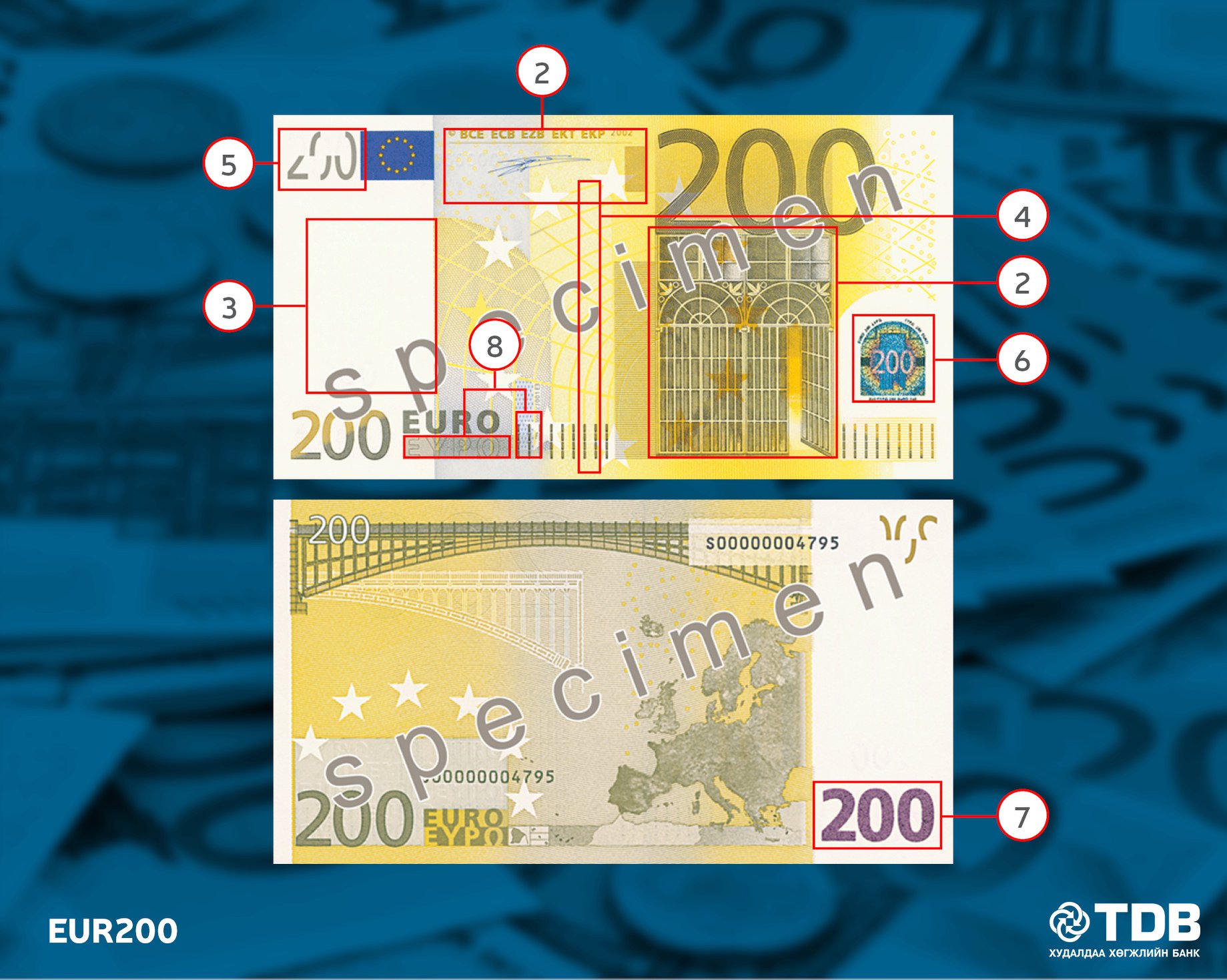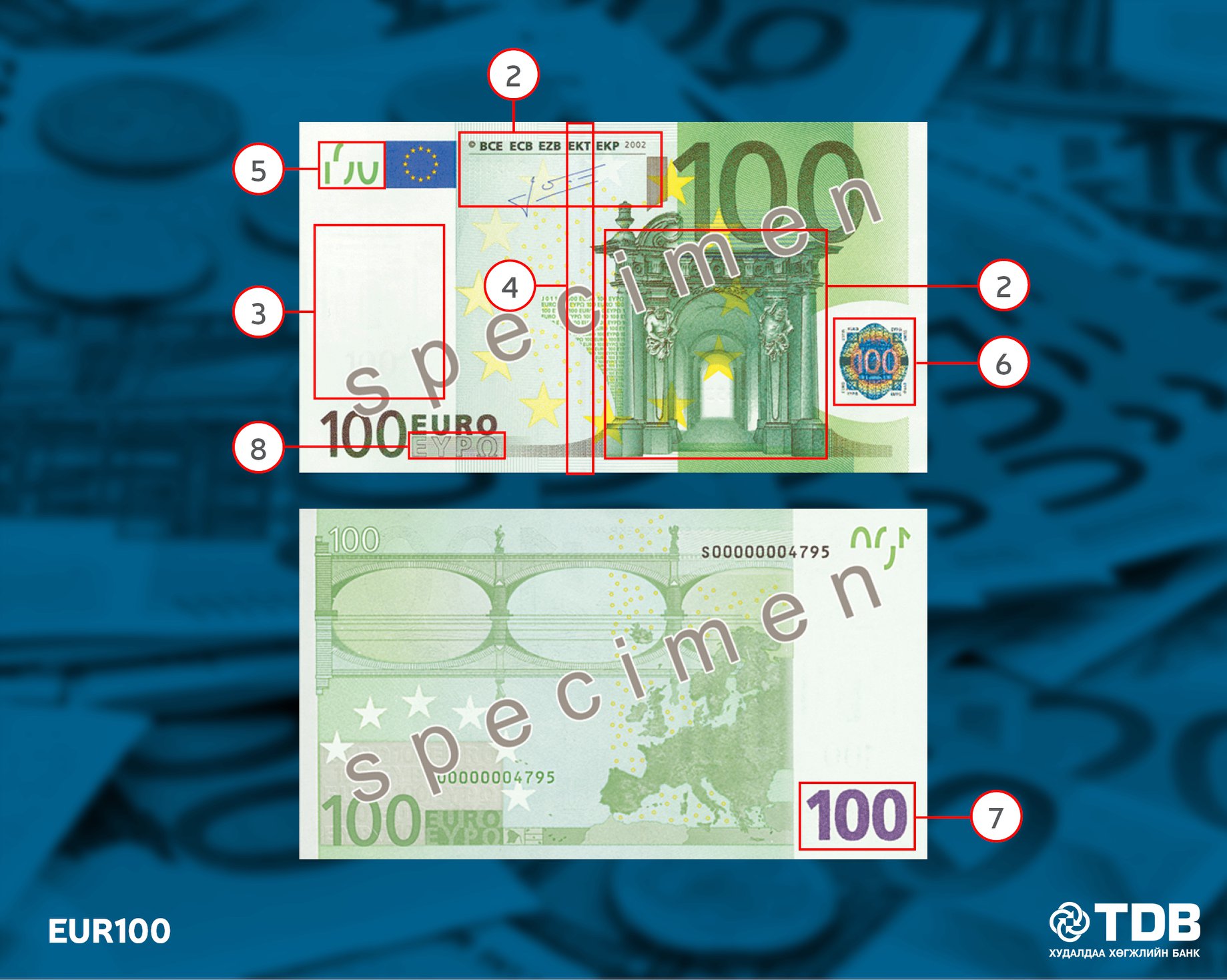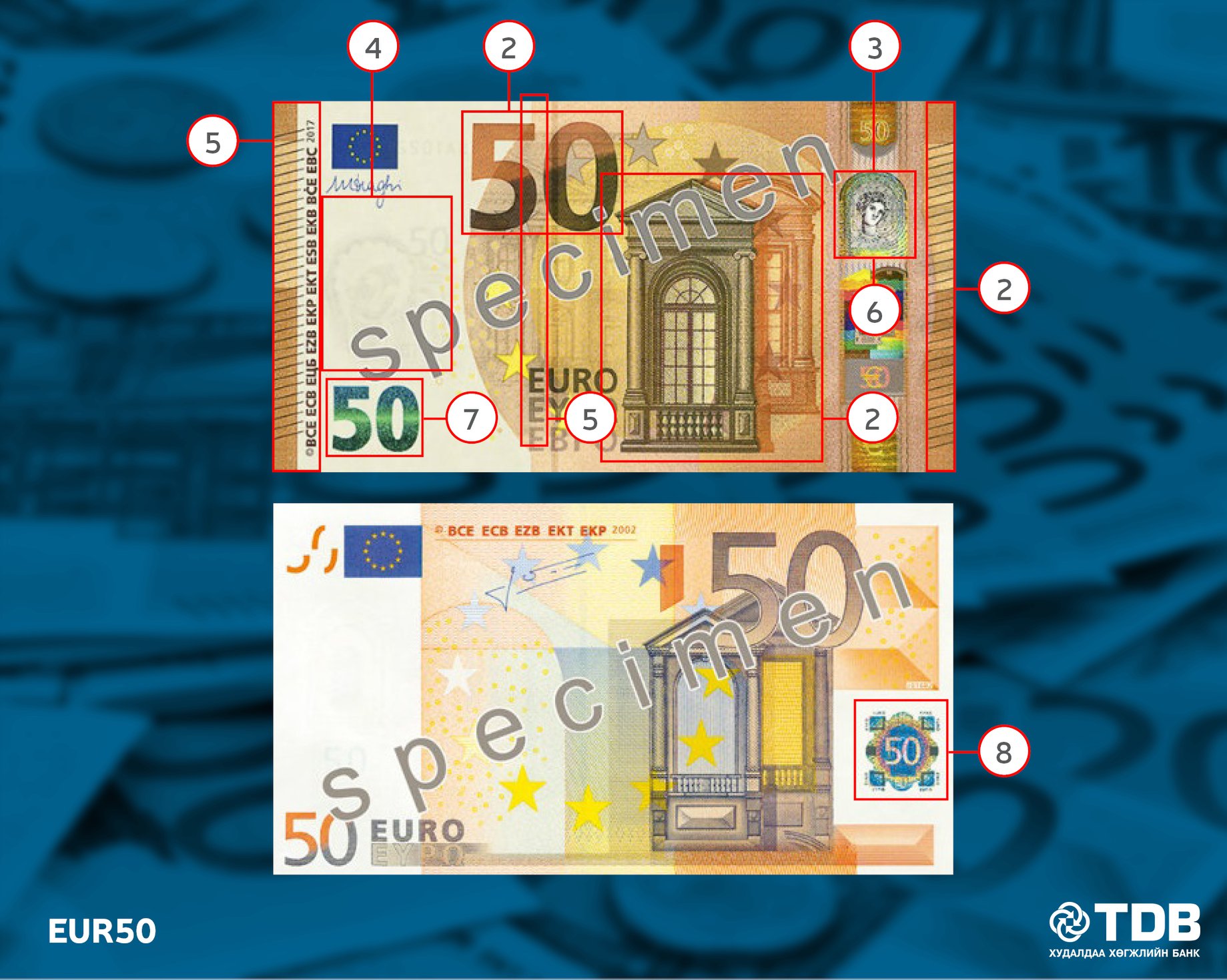
500 EURO
Feel the banknote. It should be crisp and firm.
Run your finger across the front of the banknote. The ink is thicker in some parts.
Look at the banknote against the light. A faint image and the value become visible. If, however, you put the banknote on a dark surface, the watermark becomes darker.
Look at the banknote against the light. The security thread – a dark line running through the banknote – becomes visible. The word “EURO” and the value can be seen in tiny letters in the thread.
Look at the banknote against the light. The marks printed in the top-left corner on the front and the top-right corner on the back of the banknote combine perfectly to form the value.
When you tilt the banknote, the hologram shows the value of the note and a window or doorway.
Tilt the banknote. On the back, the number changes color from purple to olive green or brown.
On some areas of the banknote you can see tiny writing. This microprint appears as a thin line to the naked eye, but can be read with a magnifying glass. Despite its small size, the print is sharp, not blurred.
Under ultraviolet light, the paper itself does not glow. Red, blue and green-colored fibers embedded in the paper appear, the flag of the European Union looks green and the stars turn orange. The signature of the ECB’s President turns green. The large stars and small circles in the center glow orange. On the back, the map, bridge and value appear in yellow.

200 EURO
Feel the banknote. It should be crisp and firm.
Run your finger across the front of the banknote. The ink is thicker in some parts.
Look at the banknote against the light. A faint image and the value become visible. If, however, you put the banknote on a dark surface, the watermark becomes darker.
Look at the banknote against the light. The security thread – a dark line running through the banknote – becomes visible. The word “EURO” and the value can be seen in tiny letters in the thread.
Look at the banknote against the light. The marks printed in the top-left corner on the front and the top-right corner on the back of the banknote combine perfectly to form the value.
When you tilt the banknote, the hologram shows the value of the note and a window or doorway.
Tilt the banknote. On the back, the number changes color from purple to olive green or brown.
On some areas of the banknote you can see tiny writing. This microprint appears as a thin line to the naked eye, but can be read with a magnifying glass. Despite its small size, the print is sharp, not blurred.
Under ultraviolet light, the paper itself does not glow. Red, blue and green-colored fibers embedded in the paper appear, the flag of the European Union looks green and the stars turn orange. The signature of the ECB’s President turns green. The large stars and small circles in the center glow orange. On the back, the map, bridge and value appear in yellow.

100 EURО
Feel the banknote. It should be crisp and firm.
Run your finger across the front of the banknote. The ink is thicker in some parts.
Look at the banknote against the light. A faint image and the value become visible. If, however, you put the banknote on a dark surface, the watermark becomes darker.
Look at the banknote against the light. The security thread – a dark line running through the banknote – becomes visible. The word “EURO” and the value can be seen in tiny letters in the thread.
Look at the banknote against the light. The marks printed in the top left corner on the front and the top right corner on the back of the banknote combine perfectly to form the value.
When you tilt the banknote, the hologram shows the value of the note and a window or doorway.
Tilt the banknote. On the back, the number changes color from purple to olive green or brown.
On some areas of the banknote you can see tiny writing. This microprint appears as a thin line to the naked eye, but can be read with a magnifying glass. Despite its small size, the print is sharp, not blurred.
Under ultraviolet light, the paper itself does not glow. Red, blue and green-colored fibers embedded in the paper appear, the flag of the European Union looks green and the stars turn orange. The signature of the ECB’s President turns green. The large stars and small circles in the center glow orange. On the back, the map, bridge and value appear in yellow.

50 EURО
Feel the banknote. It is crisp and firm.
Feel the banknote. On the front, there is a series of short raised lines on the left and right edges. They make it easy to identify the banknote, especially for visually impaired people. The main image, the lettering and the large value numeral also feel thicker.
Look at the banknote against the light – the window near the top of the hologram becomes transparent and reveals a portrait of Europa on both sides of the note. When the banknote is tilted, the window also shows rainbow-colored lines around the value numeral. On the back of the banknote, rainbow-colored value numerals appear in the window.
Look at the banknote against the light. A faint image becomes visible and shows a portrait of Europa (a figure from Greek mythology), the value of the banknote and the main image. If, however, you put the banknote on a dark surface, the light areas become darker. The portrait also appears in the hologram.
Look at the banknote against the light. The security thread appears as a dark line. The € symbol and the value of the banknote can be seen in tiny white lettering in that stripe.
Tilt the banknote. The hologram – the silvery stripe on the right of the note – reveals a portrait of Europa (a figure from Greek mythology) as well as the € symbol, the main image and the value of the banknote.
Tilt the banknote. The shiny number in the bottom left corner displays an effect of the light that moves up and down. The number also changes color from emerald green to deep blue.